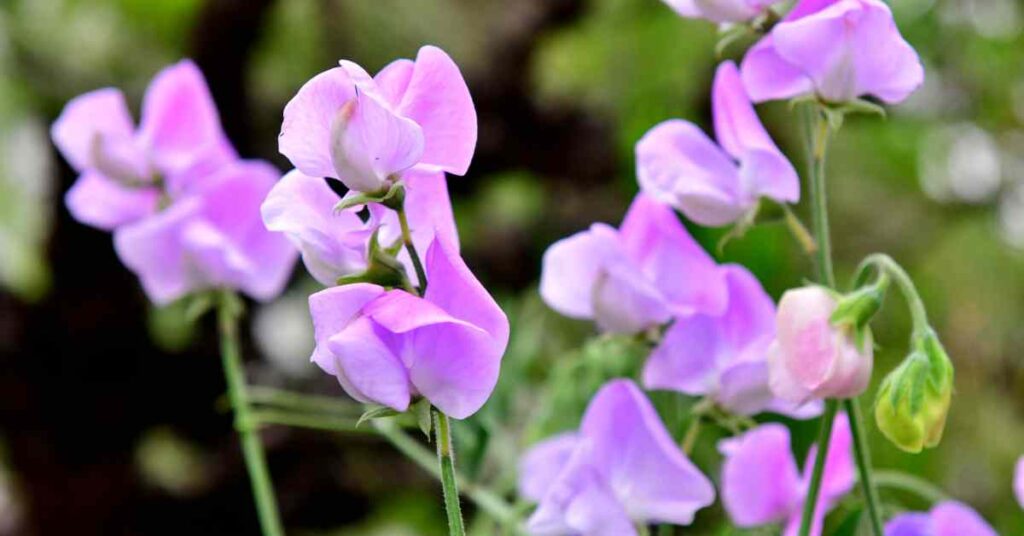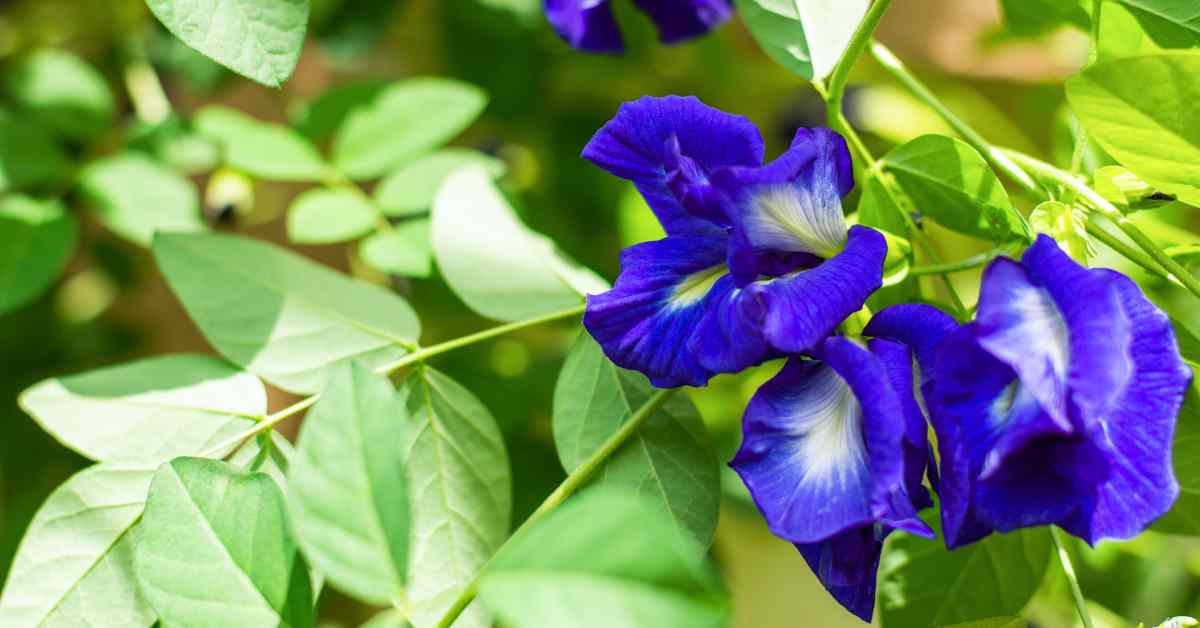Introduction to the Pea Flower
The pea flower, scientifically belonging to the family Fabaceae, is more than just a colorful bloom. This small but vibrant flower plays a crucial role in the ecosystem. It is part of plants that include peas, beans, and other legumes, which contribute to soil health, biodiversity, and pollinator support. Pea flowers have unique characteristics that make them environmentally significant, from their nitrogen-fixing abilities to their role in supporting pollinators and contributing to sustainable agriculture.
Overview of the Pea Flower
Pea flowers are most commonly recognized in edible plants such as garden peas (Pisum sativum). However, many species of peas and legumes showcase this unique floral structure, featuring five petals arranged in a butterfly-like form. The distinct design of pea flowers is highly adapted for insect pollination, ensuring both reproduction and a symbiotic relationship with the surrounding ecosystem.
The Biology and Characteristics of Pea Flowers
Structure and Design of Pea Flowers
Pea flowers are bilaterally symmetrical, meaning they have a mirror-image structure. Their five petals include a large upper “standard” petal, two lateral “wing” petals, and two lower fused “keel” petals that enclose the reproductive parts of the flower. This unique arrangement is perfectly suited for cross-pollination by insects like bees. As insects search for nectar, they brush against the reproductive structures, helping with pollen transfer.
Pollination Strategies
Pea flowers rely on insects for pollination, especially bees. These pollinators are drawn to the brightly colored petals and sweet nectar. As the bees land on the keel petals, their weight causes the reproductive structures to come into contact with the bee’s body, facilitating the transfer of pollen. This efficient pollination process ensures the propagation of the plant and supports the ecosystem by providing food sources for insects.
Ecological Importance of the Pea Flower
Nitrogen Fixation and Soil Health
One of the most crucial ecological roles of pea flowers is their association with nitrogen-fixing bacteria. Pea plants, like other legumes, form symbiotic relationships with Rhizobium bacteria in their root nodules. These bacteria convert atmospheric nitrogen into a form that plants can use, enriching the soil with essential nutrients. This process helps to maintain soil fertility, reducing the need for synthetic fertilizers and promoting sustainable agriculture practices.
Enhancing Soil Fertility
The ability of pea flowers and their plants to fix nitrogen in the soil has far-reaching environmental benefits. Not only does this reduce dependence on chemical fertilizers, but it also prevents soil degradation. This makes legumes, including pea plants, essential in crop rotation systems, as they restore nitrogen levels and improve the overall health of agricultural land.
Role in Supporting Biodiversity
Pea flowers play a critical role in supporting biodiversity within ecosystems. They provide a food source for a variety of insects, including bees, butterflies, and other pollinators. By attracting these insects, pea flowers help ensure the survival of pollinator populations, which are vital for maintaining the health and diversity of plant species in natural habitats.
Pea Flowers as Part of Agroecosystems
In agroecosystems, pea flowers and their plants are often integrated into sustainable farming practices. Their nitrogen-fixing abilities make them valuable in organic farming and permaculture systems. By incorporating legumes like peas into crop rotations, farmers can improve soil quality, reduce erosion, and increase biodiversity on their farms.
Environmental Benefits of Growing Pea Flowers

Reduced Need for Chemical Fertilizers
Pea plants, thanks to their nitrogen-fixing properties, significantly reduce the need for chemical fertilizers in agriculture. This contributes to a reduction in the environmental impact of farming by minimizing soil and water pollution. Chemical fertilizers, when overused, can lead to issues such as eutrophication of water bodies, where excess nutrients cause harmful algal blooms and damage aquatic ecosystems. Growing pea plants helps mitigate these effects, making agriculture more sustainable.
Contribution to Sustainable Agriculture
Pea flowers and their plants are often grown as cover crops or green manure, contributing to sustainable agricultural practices. Cover crops prevent soil erosion, retain moisture, and improve soil structure. Additionally, once plowed back into the soil, the plant material decomposes, adding organic matter and further enhancing soil health.
Crop Rotation and Pest Control
By incorporating pea plants into crop rotations, farmers can reduce the risk of soil-borne diseases and pests. Legumes like peas break the life cycle of pests that target specific crops, naturally reducing the need for pesticides. This contributes to healthier ecosystems and a more balanced agroecological environment.
Pea Flowers and Climate Resilience
Adaptability to Various Climates
Pea plants are known for their resilience and adaptability to a wide range of climates. This makes them an excellent crop for diverse agricultural systems, from temperate to subtropical regions. Their ability to thrive in varying conditions contributes to food security, particularly in regions facing the challenges of climate change.
Role in Carbon Sequestration
Pea plants, like other legumes, can contribute to carbon sequestration in the soil. By improving soil health and increasing organic matter through nitrogen fixation and root growth, pea plants help sequester carbon in agricultural soils. This process plays a role in mitigating the impacts of climate change by reducing the amount of carbon dioxide in the atmosphere.
Drought Tolerance and Water Use Efficiency
Some species of pea plants are drought-tolerant, making them a valuable crop in regions facing water scarcity. Pea plants have relatively low water requirements compared to other crops, making them an environmentally friendly choice for sustainable agriculture. By growing drought-tolerant plants like peas, farmers can conserve water resources and maintain productivity even in challenging environmental conditions.
Conservation and Preservation of Wild Pea Species

Threats to Wild Pea Species
While cultivated peas are common in agricultural systems, wild pea species face several environmental threats. Habitat loss, climate change, and agricultural expansion pose significant risks to wild pea populations. Conserving these species is essential for maintaining biodiversity and ensuring the continued availability of genetic resources that could be crucial for future food security.
Importance of Genetic Diversity
Wild pea species contribute to the genetic diversity of the genus, offering traits that could be useful in breeding programs for disease resistance, climate adaptability, and increased nutritional value. Preserving wild pea species and their habitats ensures that we maintain a pool of genetic diversity that can be drawn upon to address future agricultural challenges.
Conservation Efforts for Wild Peas
Efforts to conserve wild pea species include protecting their natural habitats, seed banking, and incorporating wild traits into breeding programs for cultivated peas. Organizations like the International Union for Conservation of Nature (IUCN) work to protect endangered plant species, including wild legumes, by raising awareness and promoting sustainable land management practices.
The Role of Pea Flowers in Pollinator Support
Attraction of Beneficial Insects
Pea flowers are highly attractive to beneficial insects, especially bees and butterflies. These pollinators are essential for the reproduction of many plant species, including food crops. By providing nectar and pollen, pea flowers support the health of pollinator populations, which have been in decline due to habitat loss, pesticide use, and climate change.
Impact on Pollinator Populations
Pollinators play a crucial role in food production and ecosystem health. The decline of pollinator species, such as bees, poses a significant threat to global food security and biodiversity. Pea flowers, by attracting pollinators, contribute to the stability of these populations, helping to sustain agricultural systems and natural ecosystems alike.
The Relationship Between Pea Flowers and Native Pollinators
In areas where wild pea species grow, native pollinators have evolved alongside these plants, forming specialized relationships. Preserving wild pea habitats supports native pollinator species, contributing to the overall health of local ecosystems. These relationships highlight the interconnectedness of plants and pollinators and the importance of protecting both for the health of the environment.
The Future of Pea Flowers in Sustainable Agriculture
Innovative Agricultural Practices
As the world faces increasing environmental challenges, pea flowers and their plants will play a growing role in sustainable agriculture. New farming techniques, such as agroforestry, permaculture, and regenerative agriculture, can benefit from the inclusion of pea plants due to their nitrogen-fixing abilities, low water requirements, and adaptability.
Role in Global Food Security
Pea plants are not only environmentally significant but also nutritionally important. Rich in protein, fiber, and essential nutrients, peas are a staple food in many parts of the world. As the global population continues to rise, increasing the cultivation of environmentally friendly crops like peas can help ensure food security while minimizing environmental impacts.
Conclusion
The pea flower, with its vibrant colors and unique structure, is much more than just a bloom. It is a vital player in maintaining soil health, supporting pollinator populations, and contributing to sustainable agriculture. By fixing nitrogen in the soil, attracting beneficial insects, and offering a source of nutrition, pea flowers and their plants are indispensable in both natural and agricultural ecosystems.
As we look to the future of agriculture and conservation, pea plants offer a sustainable solution to many environmental challenges. From reducing the need for chemical fertilizers to supporting biodiversity, pea flowers demonstrate the profound connection between plants, pollinators, and the health of the planet. Preserving wild pea species and promoting the use of legumes in agriculture will be essential for building resilient ecosystems and ensuring the sustainability of food production systems worldwide.
Read More: Introduction to Azela: Environmental Importance and Ecological Significance

